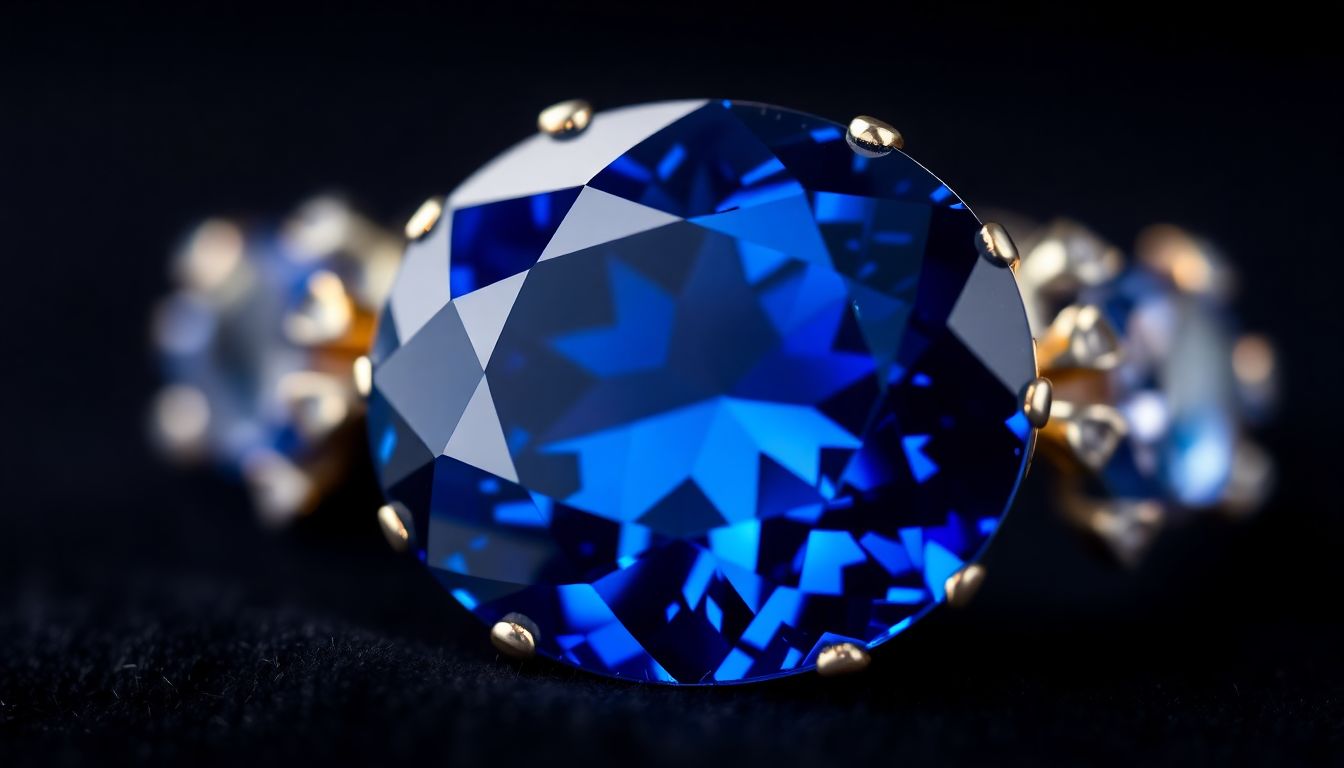
Complete Guide to Sapphire Gemstones: Characteristics, Significance, and Buying Tips
Introduction
Sapphires have long captivated people with their vibrant colors and rich history. They symbolize truth, loyalty, and wisdom and have been favored in crowns and jewelry for centuries. Whether you are a collector or just love jewelry, understanding sapphires helps you make wise choices. This gemstone’s beauty and value make it one of the most sought-after jewels in the world.
History and Cultural Significance of Sapphire
Origins and Historical Uses
Ancient civilizations valued sapphires for their beauty and believed they held special powers. Persian kings used sapphires to color the sky in their stories. India and Greece also treasured sapphires, often wearing them as symbols of power. Rich royal families, like the British monarchy, prized sapphires for personal adornment and diplomatic gifts.
Symbolism and Beliefs
Across cultures, sapphires represent trust, sincerity, and protection. Many believed the gemstone could ward off evil and bring good luck. Some cultures thought sapphires could heal the body and calm the mind. These beliefs made sapphires more than just a gem—they became talismans of love and safety.
Modern Cultural Significance
Today, sapphires are still popular in jewelry, especially for engagement rings. Famous examples include Princess Diana’s and Kate Middleton’s stunning sapphire rings. They also appear in movies, starring in famous jewelry pieces, and remain a symbol of elegance and faithfulness. Sapphires’ timeless look makes them a top choice for modern celebrations and fashion.
Geological and Mineralogical Characteristics of Sapphire
Composition and Formation
Sapphires are a type of corundum mineral with the chemical formula Al₂O₃. They form deep inside the Earth under high heat and pressure. Over thousands of years, they develop in volcanic rocks or alluvial deposits, where they are often found in rivers or on mountain slopes.
Colors and Variations
While most people associate sapphires with blue, they actually come in many colors. You can find pink, yellow, green, white, and even rare hues like purple or orange. The color depends on tiny elements inside the stone. For example, titanium and iron give blue sapphires their vibrant shade, while chromium can turn sapphires pink or red.
Clarity and Inclusions
Most sapphires have some natural marks called inclusions. These can look like tiny feathers or crystals inside the gem. Usually, minor inclusions don't affect the strength or beauty of the sapphire. Still, cleaner stones tend to be more valuable. The key is balancing beauty with authenticity.
Types of Sapphires and Their Unique Features
Natural vs. Treated Sapphires
Natural sapphires are untouched by humans. Treated sapphires, however, undergo processes to improve their look. Common treatments include heating, irradiation, or coating. Always ask for certification to understand if the stone has been enhanced.
Famous Types of Sapphires
- Padparadscha: Known for its rare pink-orange glow. It resembles a sunset in a gemstone.
- Kashmir: Celebrated for its velvety, deep blue color. It’s one of the most prized sapphires in history.
- Ceylon: Bright and lively, these sapphires often display high clarity and a vibrant blue hue.
Synthetic Sapphires
Lab-created sapphires mimic natural stones but are produced in factories. They use methods like flame fusion or the Czochralski process. They cost less and are often more perfect in color and clarity. For buyers on a budget, synthetics can be a good choice, but natural sapphires hold more long-term value.
How to Identify and Evaluate a Sapphire
Physical and Visual Inspection
Look at the color. The best sapphires have bright, deep hues with good saturation. Check for any noticeable flaws or cloudy areas. Clear stones with minimal inclusions tend to be more valuable. Use a loupe to examine the gem closely.
Certification and Grading
Always ask for certification from trusted labs like GIA or AGS. They assess stones based on color, cut, clarity, and weight. A well-graded sapphire is worth more and assures authenticity. Don’t buy a gem without proof—imposters are common.
Tips for Buyers
Be aware of fake stones and common scams. Avoid overly cheap sapphires or stones with suspicious looks. Know what treatments are acceptable and which significantly decrease value. Buying from reputable dealers guarantees better quality and returns if needed.
Buying, Caring for, and Investing in Sapphire Jewelry
Tips for Purchasing
Buy sapphires from trusted jewelers with good reviews. Check the origin—some sapphires from Kashmir or Ceylon are more desirable. Larger and more intense-color stones demand higher prices, so compare options before buying.
Care and Maintenance
Clean your sapphire jewelry with warm water and mild soap. Use a soft brush to remove dirt. Avoid harsh chemicals that can damage the gemstone. Remove jewelry before strenuous activities to prevent scratches or damage.
Investment and Valuation
Sapphires can appreciate over time, especially rare or high-quality stones. Keep records of certificates, origin, and treatment details. Notable auction prices include a Kashmir sapphire ring that sold for millions—showing their long-term value.
Conclusion
Sapphires stand out for their vivid colors, rich history, and cultural importance. Knowing the differences between types, treatments, and evaluations helps you make smart choices. Whether buying your first sapphire or collecting rare gems, understanding these details ensures you’ll appreciate their true beauty. Take your time, ask questions, and choose wisely—your perfect sapphire awaits.